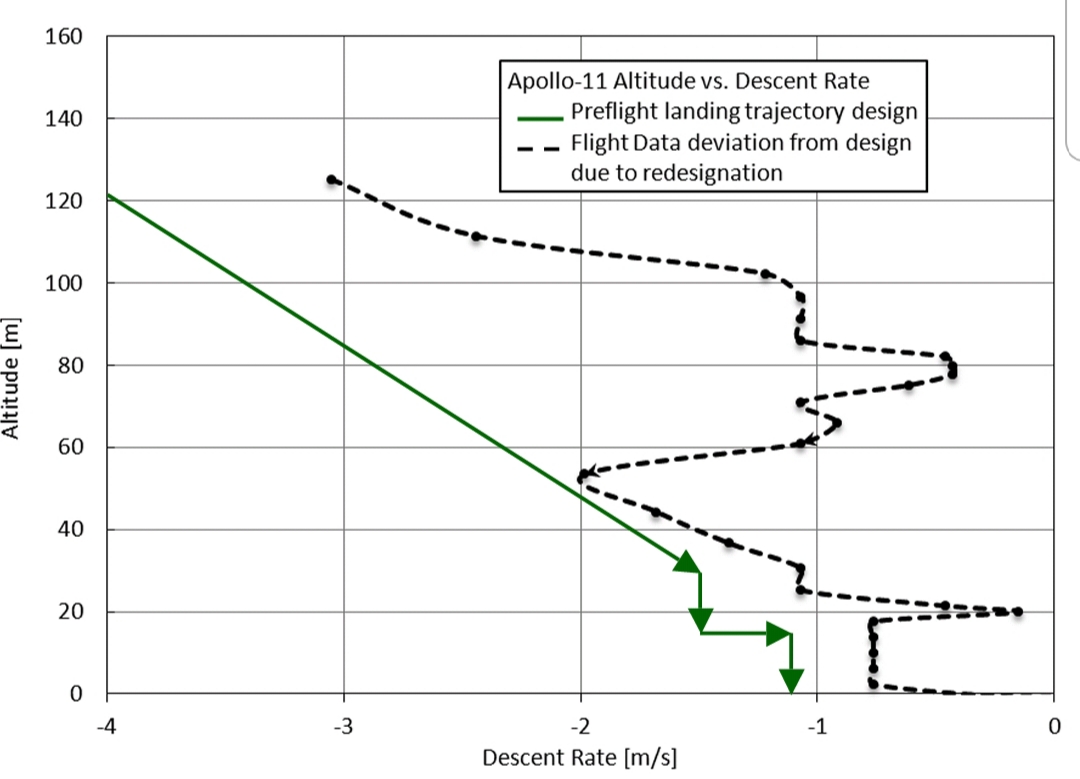In the final phase of the Apollo landings, the commander would go into "P66 attitude hold" mode, where the computer maintained a steady rate of descent while allowing the commander to change the orientation of the spacecraft to steer to a good landing site. The rate of descent could be adjusted in one-foot-per-second increments, and the goal would be to touch down at around 3 fps or less.
During this phase, the lunar module pilot would call out altitude and descent rates (as well as horizontal rates and other useful information) so that the commander could keep his eyes on the terrain. Occasionally the LMP would suggest speeding up or slowing down the descent. The dangers of coming down too fast are obvious, but coming down too slowly runs the risk of depleting the fuel in the descent stage. Some examples:
Apollo 14 (Shepard/Mitchell):
108:13:44 Mitchell: 170 feet and holding (altitude). About 1 foot per second down. You want to speed it up a little bit.
Apollo 17 (Cernan/Schmitt):
113:00:42 Schmitt: 300 feet, 15 feet per second. A little high. H-dot's a little high.
113:00:55 Schmitt: Okay; 9 feet per second down at 200. Going down at 5. Going down at 5. Going down at 10 (fps); cut the H-dot. The fuel's good. 110 feet. Stand by for some dust. Little forward, Gene.
H-dot refers to the descent rate.
Apollo 12 (Conrad/Bean):
110:31:23 Bean: Ten percent fuel. 200 feet; coming down at 3. (You) need to come on down.
Apollo 16 (Young/Duke):
104:28:45 Duke: Okay, 200 feet, 11 (fps) down. Give me a couple of clicks up.
104:29:08 Duke: Okay, 80 feet, down at 3. Looking super. There's dust. (Pause) Okay, down at 3. 50 feet, down at 4. Give me one click up. You're backing up slightly. (Pause)
Clicking the rate of descent switch upward would slow the descent, so these are surprisingly direct recommendations.
An annotation from Charlie Duke in the A16 flight journal regarding the 200 foot call strongly indicates that there was a standardized descent rate schedule:
["He's going down too fast. Okay? And our profile calls for 5 foot per second, H-dot; and he's 11. And 12 was our maximum. And, so, I wanted him to slow down a little bit. We were sinking too fast. I wanted to get him closer back to profile."]
Can someone find the descent rate profile that Duke is referring to here? Did LMPs look at a cheat sheet during the descent, or would they memorize key altitude-versus-ROD reference points?
I did find this schedule in Apollo Lunar Module Landing Strategy, but I believe it is the schedule which would be used by the fully automatic landing, possibly not what humans were expected to do, and I'm interested in data up to at least 500 feet altitude (commanders went into P66 at varying altitudes from 240 to 550 feet).
I'm trying to program a "virtual LMP" for a landing simulator, who will deliver reasonably realistic callouts to assist the player in landing.


